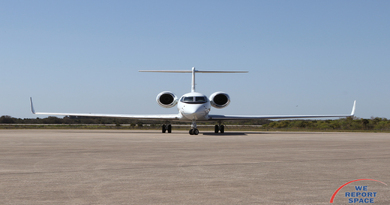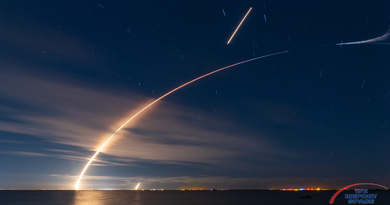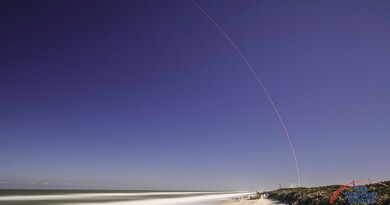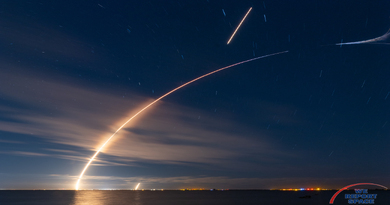NASA's Sonic Boom Expert on Falcon 9 Landings
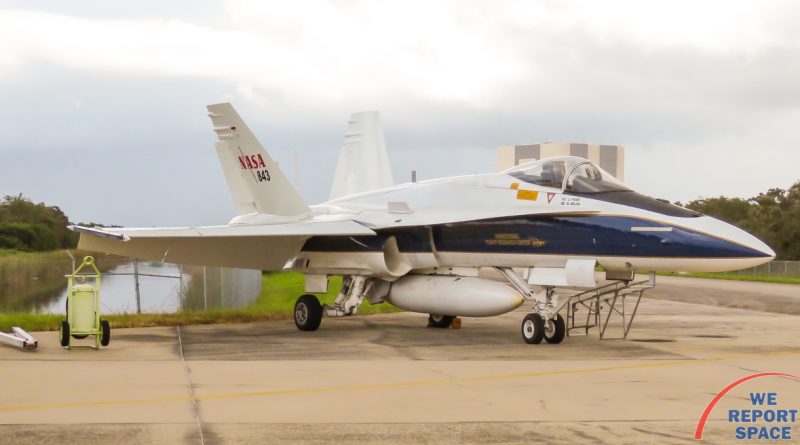
KENNEDY SPACE CENTER: The humid Florida climate has brought a team of NASA researchers to Kennedy Space Center in August to measure how a sonic boom will propagate in humid atmosphere. The team is in the midst of an eight-year project to modify the shape of future super-sonic aircraft to lessen noise from sonic booms. The result of the research could lead to a new line of super-fast business jets in the 2040's.
Ed Haering is the principal investigator for Sonic Books in Atmospheric Turbulence (SonicBAT). His team brought a pair of F-18 jets to KSC in order to generate 33 sonic booms from August 21-31, 2018. We Report Space had a chance to ask Haering about the sonic booms heard each time the Falcon 9 lands at LZ-1 at CCAFS.
Any Aircraft Flying Faster than Mach 1 Generates a Continuous Carpet of Sonic Booms
Haering explained that there is not one single sonic boom when the aircraft breaks the sound barrier. Every aircraft traveling faster than Mach 1 generates a continuous shock wave that will lay down a carpet of sonic booms. That carpet can be fifty miles wide. On the ground, we only hear the double-sonic boom once as the shock wave passes over us.
"Every rocket that launches will be generating a sonic boom. But the sonic boom is directed in front of the rocket, so you won't hear those sonic booms near the launch site. The Falcon, however, turns around and returns to Cape Canaveral, generating a sonic boom that is heard in Florida."
Although we generally hear the sonic boom just before the Falcon 9 touches down at Landing Zone 1, the shock wave that we hear was generated over a minute ahead of time. "The sonic booms that you are hearing from the F-18 take 73 seconds to reach the ground.
Why Does the Sonic Boom Change from Launch to Launch?
If the Falcon 9 is returning at the same speed, it will generate an identical shock wave. But the propagation of that shock wave through the atmosphere will change the sound. In this week's experiments, a pair of F-18 jets are generating 33 identical sonic booms at the same speed and the same altitude. Two arrays of microphones set up on Cape Canaveral are measuring the sound. The primary microphone array is comprised of 16 microphones spread in a line 100 feet apart, thus covering 1500 feet of distance. Disturbances in the atmosphere can cause the boom measured from one microphone to be twice as loud as the next one.
Haering: "Imagine a Lava Lamp. There are various blobs of material in the lava lamp. Some blobs are larger than others. As the shock wave from the aircraft travels through pockets of air in the atmosphere, the sound from the sonic boom can be dampened."
The SonicBAT team originally measured their first 33 sonic booms at Edwards Air Force base, where "high humidity" is 30%. This week's experiments in Florida are measuring the variations through the turbulent Florida atmosphere.
The Goal is a Low Boom Aircraft
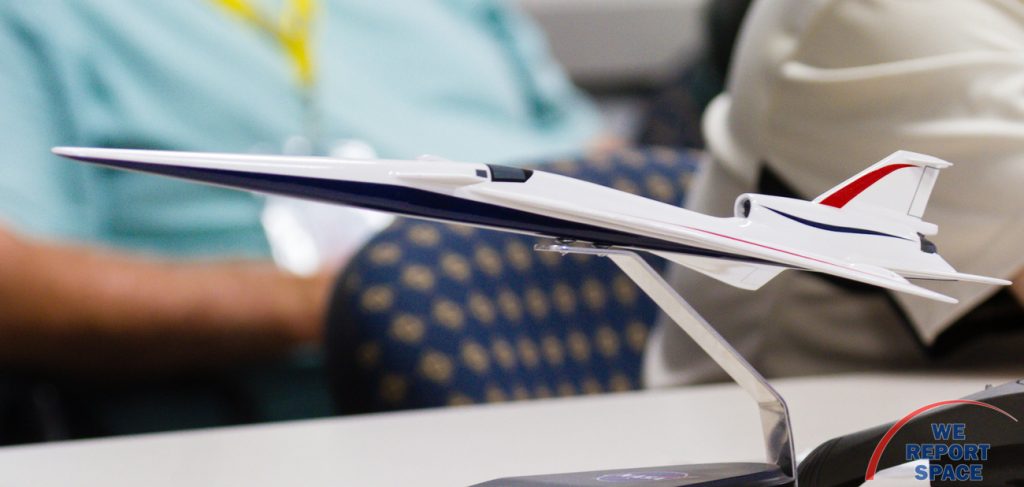
This summer, Lockheed Martin was contracted to develop the primary design for a Low Boom aircraft. By modifying the shape of the aircraft, NASA hopes to reduce the N-Wave generated and lessen the sonic booms. Since 1973, the FAA has banned supersonic flights over population centers. This effectively banned supersonic flight from New York to California. If a new low-boom standard can be set, it provides the opportunity for the US to take the lead in a new class of aircraft manufacturing. The market potential for business aircraft is 350-500 units and civil airliners over 500 units. Aviation manufacturing contributes $76 Billion a year to the US Trade Balance. It has an impact on GDP and provides high-value jobs.
The research community has sufficient data to convince the FAA for the need for a new low-boom standard. This month, NASA released a Request for Proposal to design and build a Low Boom Flight Demonstration aircraft based on the Lockheed Martin design. The aircraft timeline:
- 2018 Design & Build Contract Award
- 2021 First Flight
- 2022 Low Boom accoustic signature validation
- 2023 Initial community response test based at Edwards Air Force Base
- 2023-2025 community response tests throughout the USA
Haering hopes the demonstration aircraft will generate sonic booms that are one-sixth quieter. "You won't even notice them if you are having a conversation outdoors in Manhattan. On a quiet farm in Kansas, the farmer might still notice them." That's why the FAA is seeking to test community response to sonic booms throughout the USA.
What Will the Space Coast See and Hear in August?
The flights were designed generate sonic booms that you can hear at Playalinda Beach, Biolab Road and the KSC Visitor Center. Some of the sonic booms might be audible in Titusville, but that was not the intention. Most flights will be between 10 AM and 5 PM. One flight could take off as early at 8AM. The goal is 3 sonic booms per flight, 3 flights per day, with at least 11 flights. The team needs to generate 33 identical shock waves in order to have a statistically valid population. If some flights don't generate the proper boom, the team might need to have additional flights. All flights on the media day - Thursday August 24, 2018 were cancelled due to weather in Jacksonville. Air Traffic Control in JAX needed to re-route commercial aircraft into the SonicBAT testing area.
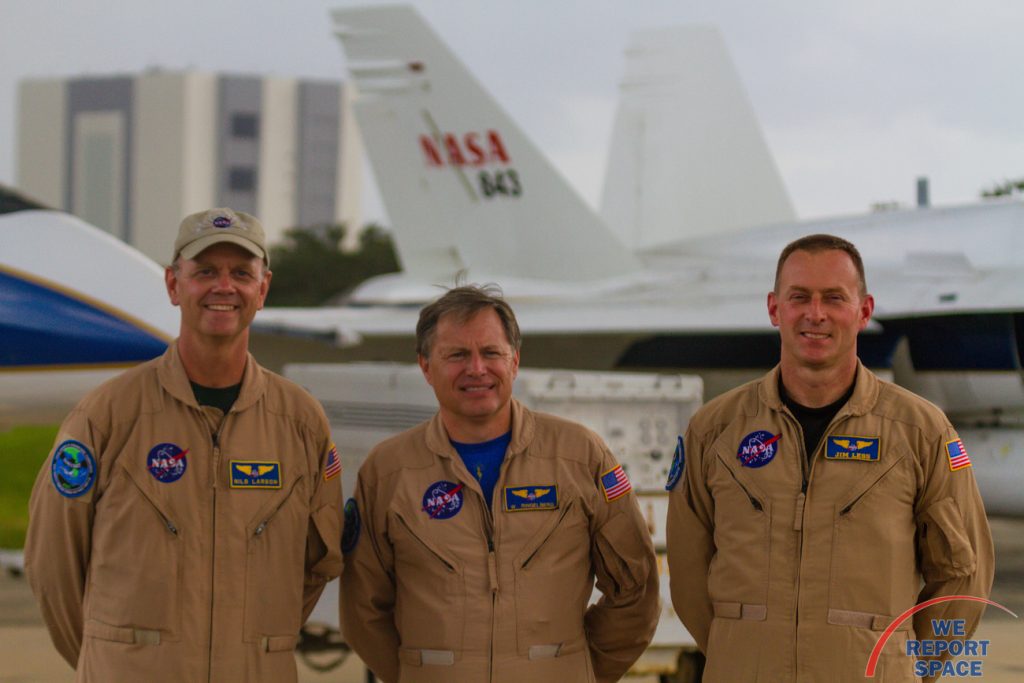
Two aircraft are used for each test. Here is a typical flight timeline:
- 10:45 AM: a TG-14 Motor Glider takes off and ascends to over 3000 feet in order to get above the turbulence layer. When the sonic boom is generated, this pilot will turn off the motor and measure the sound of the sonic boom above the turbulence layer. After recording the sonic boom, the pilot re-starts the motor and climbs back up for the next measurement.
- 11:00 AM: a F-18 takes off and climbs to 40,000 feet
- 11:20 AM to 11:35 AM: Three sonic booms will be generated
- 11:45 AM: the F-18 lands
You can track the F-18 flights using these links:
- F-18 NASA 843 at FlightAware
- F-18 NASA 846 at FlightAware
- TG-14 Motor Glider NASA 856 at FlightAware
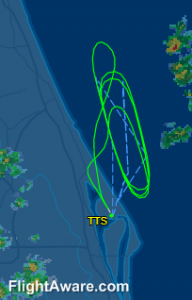

Stunning, full color photo book covering every east coast launch spanning 2014-2015, including the first-ever powered landing of a SpaceX Falcon 9 rocket.
More Info
